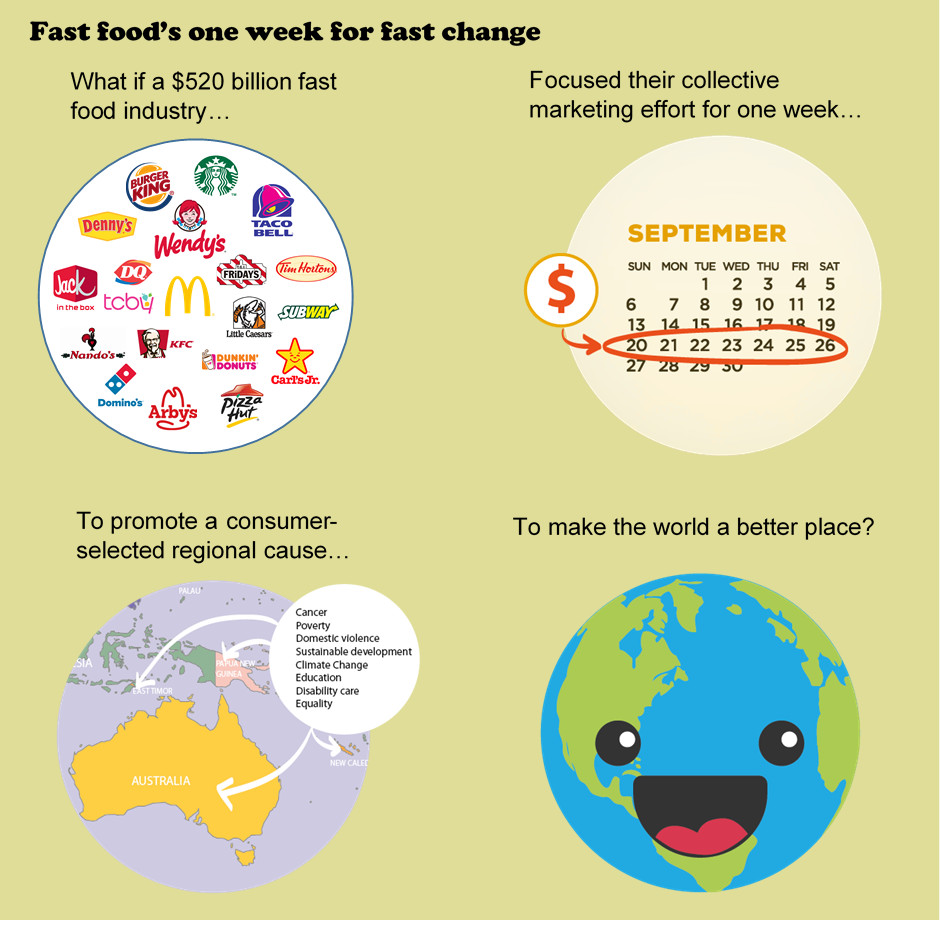How fast food companies can save the world (lessons from the McWhopper campaign)
The challenges facing the world can seem overwhelming. Climate change threatens mass displacement, religious extremists organise into terror States, and refugees pour across borders fleeing violence in their home countries. Each day headlines expose the complexity of being human as we deal with racial intolerance, wealth inequality, ecological extinction, domestic violence, substance abuse, political corruption, and corporate excess. And these are just the things we can influence, not to mention situations we can’t control such as natural disasters and incurable disease.
It makes sense that such large and diverse problems might be addressed by large and diverse organisations. It is even more tempting to think that the complexity of the challenge might be solved with a simple solution.
Which brings us to consider if Burger King’s McWhopper campaign might be an effective pathway for world peace, or whether an alternative approach of competitive collaboration might hold more value.
The campaign
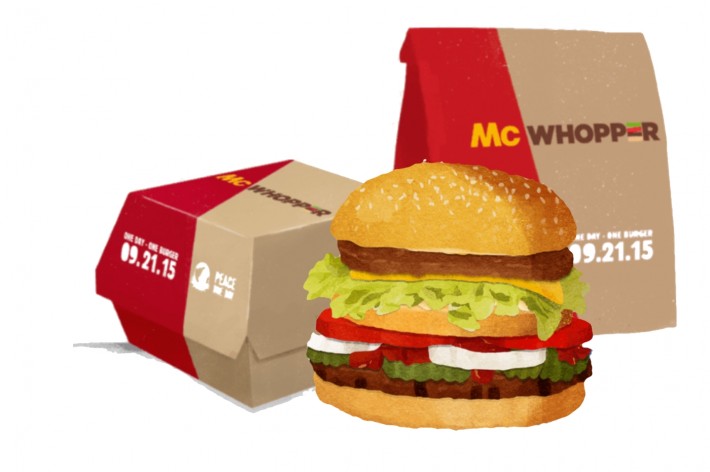
Burger King recently called out McDonalds using full-page newspaper ads outlining a challenge to combine two of the company’s products into a McWhopper to support the Peace One Day project.
McDonalds rejected the plan, with the response from the CEO below:

Burger King soon received offers from other fast food companies to take McDonald’s place in the campaign and is currently proceeding to combine parts of their competitor’s burgers into a single Peace Day Burger.
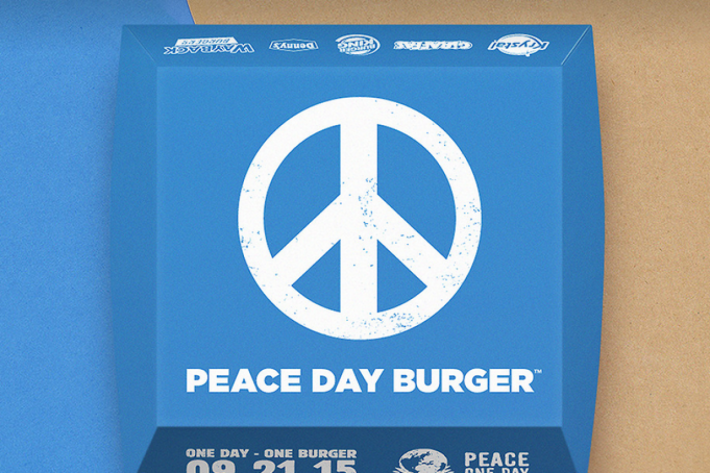
While the campaign may focus our collective short attention spans, McDonalds’ CEO has a point that that there are more effective actions to focus the attention of commercial companies towards social change.
Competing for a cause?
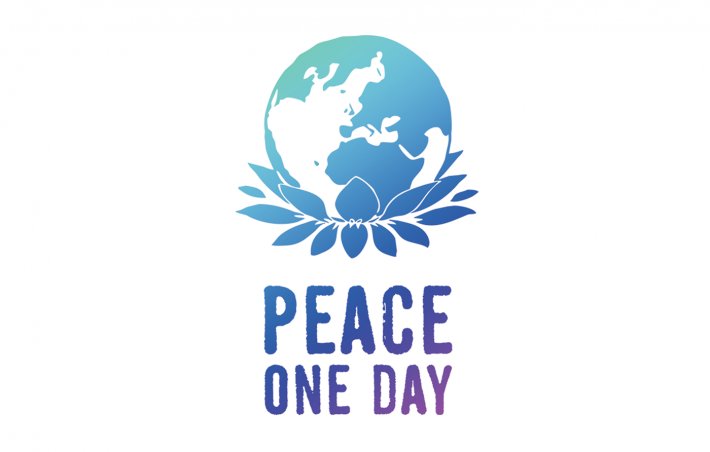
Competitive collaboration is tricky business. These are often seen in the form of alliances, joint ventures, licencing arrangements, or outsourcing agreements. Getting two organisations that traditionally compete for the same scarce consumer resource can be a matter of checking egos at the door.
The idea of bringing competing brands together is compelling. Previous concepts from an aspiring creative linked brands such as Coke and Pepsi, Lamborghini and Ferrari, and Adidas and Nike. While actual examples of food competitor collaborative mash-ups are not readily available, the Peace One Day project did manage to arrange a competitive game in 2009 between sports-wear companies Puma and Adidas.
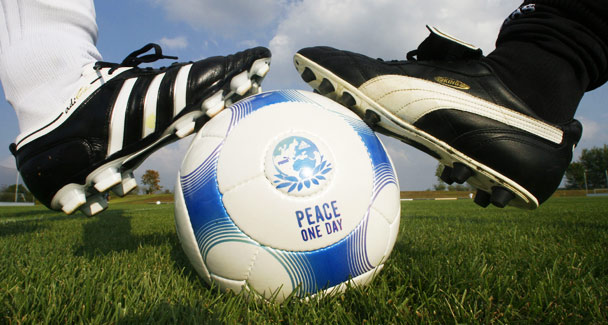
An important point to note in the comparison is that Puma and Adidas were the second and third tier players under Nike, not a challenger brand like Burger King calling out the market leader. The sportswear brands’ products are also used in actual competitive sports, not feeding people. Finally, the rivalry between Puma and Adidas goes back to an actual pre-World War II family disagreement rather than simply a factor of competing in the same market.
The issuing of a public challenge by Burger King to the market leader McDonalds one month before a campaign launch feels like less to do with the actual outcome of collaboration or world peace, and more to do with raising brand awareness to sell more burgers.
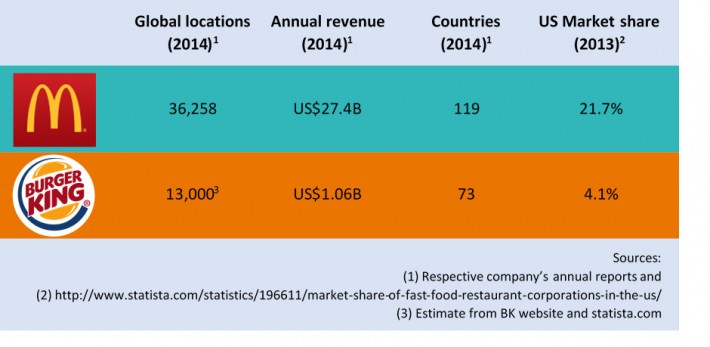
Burger King’s request was not just for a collaboration, but to tap into the marketing budget of an organisation that earns significantly more from an additional 23,000 stores. The gap between the two companies is in constant tension. Burger King’s US market share in 2013 was 4.1% compared to McDonalds 21.7%, although recent Q2-2015 quarterly results from the two companies reveal that McDonalds’ same store sales is at a slower growth rate than Burger King’s.
Framing a position in opposition to the competition exposes a fight that the consumer may not care about, or worse leave the customer disagreeing with the narrative and preferring the opposition. We saw this when Australian pizza company Eagle Boys campaigned directly against its larger rival Domino’s. The response from Domino’s CEO Don Meij was that “[We are] making pizzas, not fighting wars.” as the larger company continued to expand. Any campaign that brings the competition to mind risks a loss of market share particularly in the fickle fast food consumer.
Research shows that even though consumers may say they love their selected brand of fast food, they have little brand loyalty apart from the momentum of habitual convenience. The majority of fast food purchases are designed to satisfy instant gratification. Research into instant gratification highlights that the mere exposure to fast food logos means people are more likely to give into instant gratification impulses in the future.
Brands that compete in the low-cost convenience consumption space are in a constant battle to keep their logos top of mind. Cause-related marketing is an approach to promoting brands without having to push product. By connecting with something consumers care about, cause-related marketing is designed to tug on both heart strings and purse strings.
Cause-related marketing
Awareness campaigns like the McWhopper leverage a corporation’s cause-related marketing budget. Corporations in North American invest 9% of their sponsorship budget on cause-related marketing, which equates to over US$1.84 billion per year.To be effective, this investment into cause-related marketing needs to carefully align both the product and the consumer.
The right product
While 96% of Americans identify causes that are personally important to them, only 37% of Americans purchase a product associated with a cause. Research into cause-related marketing shows that while the cause does not necessarily need to align with the brand, the brand does need to be seen as credible and authentic.

The consumer’s willingness to purchase is significantly lower if they feel the brand is attempting to cover up a product-related risk (such as an oil company running an environmental campaign or a fast food company fighting obesity). KFC experienced “pink-washing” criticism due to associations of its food with health-related risks when it associated a campaign with breast cancer research.
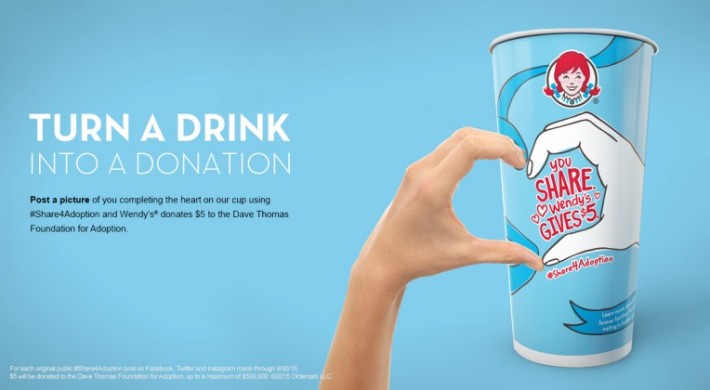
A personal connection to the campaign can help the cause, as in the case of Wendy’s founder Dave Thomas’ personal connection to the chain’s adoption campaign. Longevity also plays a factor, such as McDonald’s long-standing Ronald McDonald House supporting children needs or Burger King’s McLamore Foundation which supports international disaster relief and education. Local focus is also important, as evidenced by the success of Domino’s Doughraising campaigns that allow each franchisee to support causes that are of personal and community interest.
The McWhopper campaign risks a brand battle distracting attention away from world peace. The cause collaboration may have had better outcomes if it had simply branded product to support the cause like previous Peace One Day food-related examples with Coke, Lynx, and Ben & Jerrys ice cream.
The right consumer
In addition to the perception of the brand, a second factor in the success of a cause-related campaign is the predisposition of the consumer and the nature of the purchase. Consumers are less likely to be sceptical if the purchase is viewed as low-value and hedonistic, or a guilty pleasure. Conversely, the more we as consumers think critically about our purchase, the more critically we will assess the motives of the company providing the product or service.
Consumers of fast food companies are predisposed to support a good cause if those purchases allow them to feel like a good person at the same time as they are making themselves feel good with their fast food purchase.
Fast food consumers are a prime audience for mobilised cause-related action, but care needs to be taken to ensure the messaging is right, the effort is sustainable, and outcomes are achieved. Time will tell whether the McWhopper campaign will make an impact on world peace or the financial bottom line.
A proposal for a global cause-related fast-food campaign
I give credit to Burger King for experimenting with something new with the McWhopper campaign. Any action that moves us sustainably in the right direction is welcome and trying something new is to be commended. There may be however more effective approaches of using competitive collaboration to address the significant and complex challenges facing our world.
Many corporations take a position similar to McDonald’s founder Ray Kroc when he said “We have an obligation to give something back to the community that gives so much to us.” Coke-Cola Chairman and CEO John F. Brock acknowledged that emerging leaders “seek ‘shared value’ between profit and wider society.”
I agree with McDonald’s CEO that the industry could do something bigger to make a difference and that they can come together for meaningful global effort. To take Steve up on his challenge, I ask:
“What would it look like if fast food companies were to combine their collective efforts to support a common cause? What difference could we make if a global industry generating US$520 billion per year focused their collective consumer attention for one week each year?“
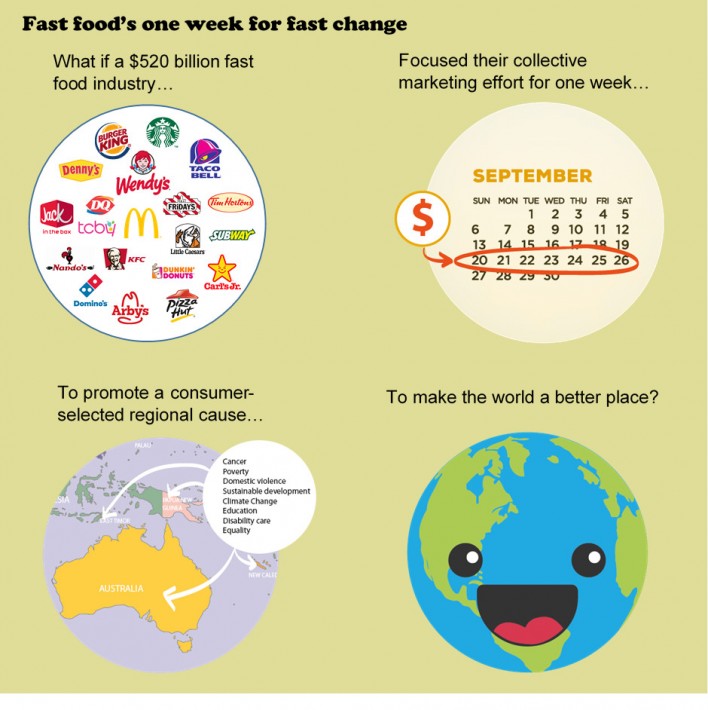
There are a few things to think through with the campaign:
- Management and campaign branding
While championed by each brand, management and coordination of the campaign would need to be through a global not for profit or social enterprise that also connects consumers to the cause. Coordination could be through an existing global system with localised content, such as specific functionality within something like Change.org. - Selecting the cause
Consumers are more engaged when they can participate in selecting the cause. Leading up to the campaign, consumers in each region select the cause the campaign will support. Regions are defined at the national level, so Australians vote for one cause, Canadians another, Germans yet another, etc. Crowd-sourcing the cause also mitigates the risk of negative association between the cause and the fast food brand. - Contributions
Similar to other cause-related exercises, contributions would be through a portion of product sales’ profit such as a dollar amount per sale. The amount and whether this is on a specific product line or the entire range can be up to the brand, but the branding of the campaign would need to be consistent. - Competition and reporting
Rather than compete on product, each brand would compete on how much money per store they can raise for the given cause. This somewhat evens the playing field between the large chains and the smaller local players. Reporting would be by brand and by nation, and impacts from the causes reported back to identify the difference made by each. - Schedule
The campaign occurs in the same week each year, creating consistency and allowing the market to prepare. Coinciding with World Peace Day in September is as good a week as any.
This is a back-of-a-napkin outline, and I acknowledge the significant barriers in coordinating an entire industry. But we already do this, at least in Western culture, around commercially-driven events such as Christmas or New Years. What if coordinating fast-food purchasing effort around a common cause was just a thing we as a species did to help ourselves for one week each year? What cumulative difference could we make over five years of focused effort?
So what do you think? If you think this is possible, I invite you to share through the social links below. I would be interested in your thoughts, challenges, and identified opportunities in the comments below.

